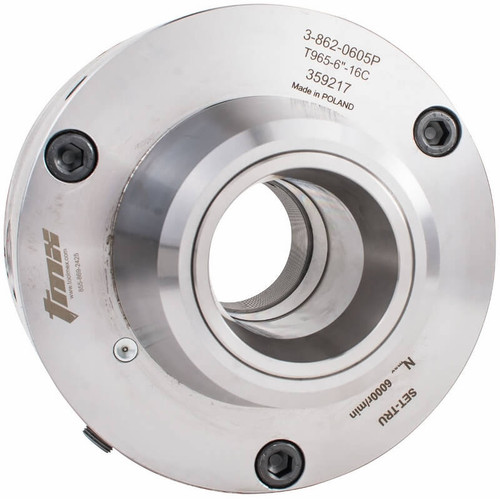I use a 4-jaw when chambering through the spindle, I'm thinking about changing to a spider.
"Pro's" would seem to be, closer to the spindle means shorter barrels no problem (vs. depth of chuck and backplate), plus being closer to the headstock always means less runout. Probably faster to indicate as well.
"Minus" would be concern of barrel slippage with small brass-tipped screws. Especially on the shank end with little or no taper, the 4-jaw is going to provide more surface area contact and clamping force. I always work "light" when it comes to barrels- especially when chambering in a steady- but I have concerns that facing/chambering forces could cause the barrel to slide to the rear using two spiders. When I chamber with a steady, I always put a shoulder on the muzzle end after truing it so it locks against the face of the chuck jaws and can't move, period. I plan to use 3/8" -24 screws, same as on the outboard spider.
I know a lot of you use a front spider, are my concerns unfounded?
"Pro's" would seem to be, closer to the spindle means shorter barrels no problem (vs. depth of chuck and backplate), plus being closer to the headstock always means less runout. Probably faster to indicate as well.
"Minus" would be concern of barrel slippage with small brass-tipped screws. Especially on the shank end with little or no taper, the 4-jaw is going to provide more surface area contact and clamping force. I always work "light" when it comes to barrels- especially when chambering in a steady- but I have concerns that facing/chambering forces could cause the barrel to slide to the rear using two spiders. When I chamber with a steady, I always put a shoulder on the muzzle end after truing it so it locks against the face of the chuck jaws and can't move, period. I plan to use 3/8" -24 screws, same as on the outboard spider.
I know a lot of you use a front spider, are my concerns unfounded?



